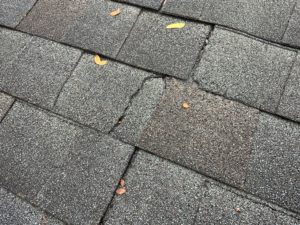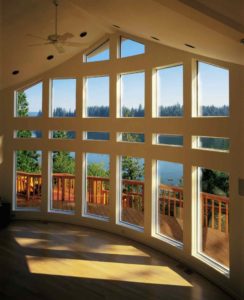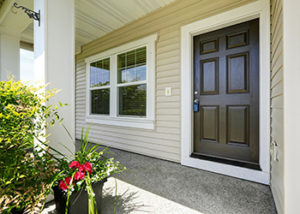Maintaining the exterior of your home is crucial, and siding plays a significant role in protecting your house from the elements. Both vinyl and James Hardie siding are popular choices due to their durability and aesthetic appeal. However, even the sturdiest siding can suffer damage over time. Whether it’s due to severe weather, accidental impacts, or general wear and tear, knowing how to effectively repair your siding can save you time and money.
In this article, we’ll cover the common issues you might encounter with vinyl and James Hardie siding. Understanding these problems can help you identify damage early and take appropriate action. We’ll also provide a comprehensive list of tools and materials needed for these repairs, ensuring you’re well-prepared before you start the job.
Repairing your siding doesn’t have to be a daunting task. With the right knowledge and a step-by-step guide, you can address issues with both vinyl and James Hardie siding efficiently. This proactive approach will keep your home looking its best and maintain its protective qualities for years to come.
Common Issues with Vinyl and James Hardie Siding
Vinyl and James Hardie siding are both excellent choices for homeowners, but each has its own set of common issues that can arise over time. Recognizing these problems early can help you address them promptly and maintain the integrity of your home’s exterior.
For vinyl siding, one of the most common issues is cracking or warping due to extreme temperature fluctuations. Vinyl can become brittle in cold weather and may crack upon impact. During hot weather, it can expand and warp if not installed properly. Additionally, vinyl siding can fade or discolor over time due to prolonged sun exposure, affecting its overall appearance.
James Hardie siding, being made of fiber cement, is generally more durable but can still encounter issues. Its primary concerns include moisture-related problems and physical damage. If not installed correctly, moisture can seep behind the siding, leading to mold and mildew growth. While rare, fiber cement can also crack if struck by heavy objects. Periodic inspections and maintenance can help mitigate these issues and keep your siding in excellent condition.
Tools and Materials Needed for Repairs
Before starting any repair work on your siding, gathering the necessary tools and materials is essential. Having everything on hand will make the process smoother and more efficient, ensuring that the repairs are done correctly.
For vinyl siding repairs, you will need a zip tool, which helps in unlocking and re-locking the panels, replacement panels that match your current siding, and a utility knife for trimming the panels to the required size. You might also need a pry bar, hammer, and nails to secure the new siding in place. Cleaning supplies such as mild detergent and a sponge are helpful for prepping the area before making any repairs.
James Hardie siding repairs require slightly different tools and materials. You will need a saw designed for cutting fiber cement, such as a circular saw with a diamond blade, replacement siding that matches your existing James Hardie panels, and corrosion-resistant nails or screws. Additionally, you may require caulking and a caulk gun to seal any gaps, along with some touch-up paint that matches your siding’s color.
Having these tools and materials ready before you start your repair work will help you handle any issues efficiently, ensuring that your siding remains in excellent condition and your home stays protected.
Step-by-Step Guide to Repairing Vinyl Siding
Repairing vinyl siding can be a straightforward process with the right approach and tools. Here is a step-by-step guide to help you fix common issues with vinyl siding.
1. Gather Your Tools and Materials: You’ll need a zip tool, replacement vinyl siding pieces, a utility knife, measuring tape, and a hammer. Make sure your replacement siding matches the existing color and style of your siding.
2. Remove the Damaged Siding: Use the zip tool to unlock the siding from the piece above it. Gently slide the tool underneath the bottom lip and pull downward to release the siding. Remove the nails holding the damaged section in place and take it off the wall.
3. Measure and Cut the Replacement Siding: Measure the length of the damaged piece and cut the new siding to match. Use a utility knife to score the siding before snapping it along the line for a clean cut.
4. Install the New Siding: Fit the new siding piece into place by securing one end first. Nail the piece to the wall, leaving a slight gap to account for expansion. Use the zip tool to lock the new piece with the existing siding above it to ensure a seamless fit.
Following these steps will help you effectively repair your vinyl siding, restoring your home’s appearance and protection.
Step-by-Step Guide to Repairing James Hardie Siding
James Hardie siding, while durable, can still require repairs. Here’s a step-by-step guide to address common issues with this type of siding.
1. Gather Your Tools and Materials: You’ll need safety goggles, a circular saw with a fiber cement blade, replacement siding pieces, measuring tape, a pry bar, a hammer, and corrosion-resistant nails.
2. Remove the Damaged Siding: Start by cutting the paint around the damaged piece to separate it from adjacent panels. Use a pry bar to gently lift the siding and remove any nails securing it. Carefully remove the damaged section without harming the surrounding siding.
3. Measure and Cut the Replacement Siding: Measure the length and width of the removed piece. Use the circular saw to cut the new James Hardie siding to the correct size. Always wear safety goggles to protect your eyes while cutting.
4. Install the New Siding: Slide the new piece into place, ensuring it lines up with the existing siding. Nail the piece to the wall using corrosion-resistant nails. Be sure to leave a small gap around the nail heads to allow for movement.
5. Paint Touch-Up: After the new siding is in place, use matching paint to touch up the area around the new piece. This step ensures a uniform appearance and adds an extra layer of protection.
These steps should help you repair James Hardie siding efficiently, maintaining the integrity and appearance of your home.
Conclusion
Repairing vinyl and James Hardie siding can seem daunting, but following clear steps makes the process manageable. Whether it’s a small crack or extensive damage, knowing how to address these issues can save time and money while preserving your home’s appearance and functionality.
Regular maintenance and prompt repairs help extend the life of your siding, ensuring your home remains protected against the elements. Accurate documentation and proper use of tools and materials are essential to successful repairs.
For expert assistance with your siding repairs or replacements, contact Lighthouse Exteriors, a vinyl siding contractor. Our team is dedicated to providing high-quality, reliable solutions for your home. Reach out to Lighthouse Exteriors today to safeguard your home with professional siding services.







